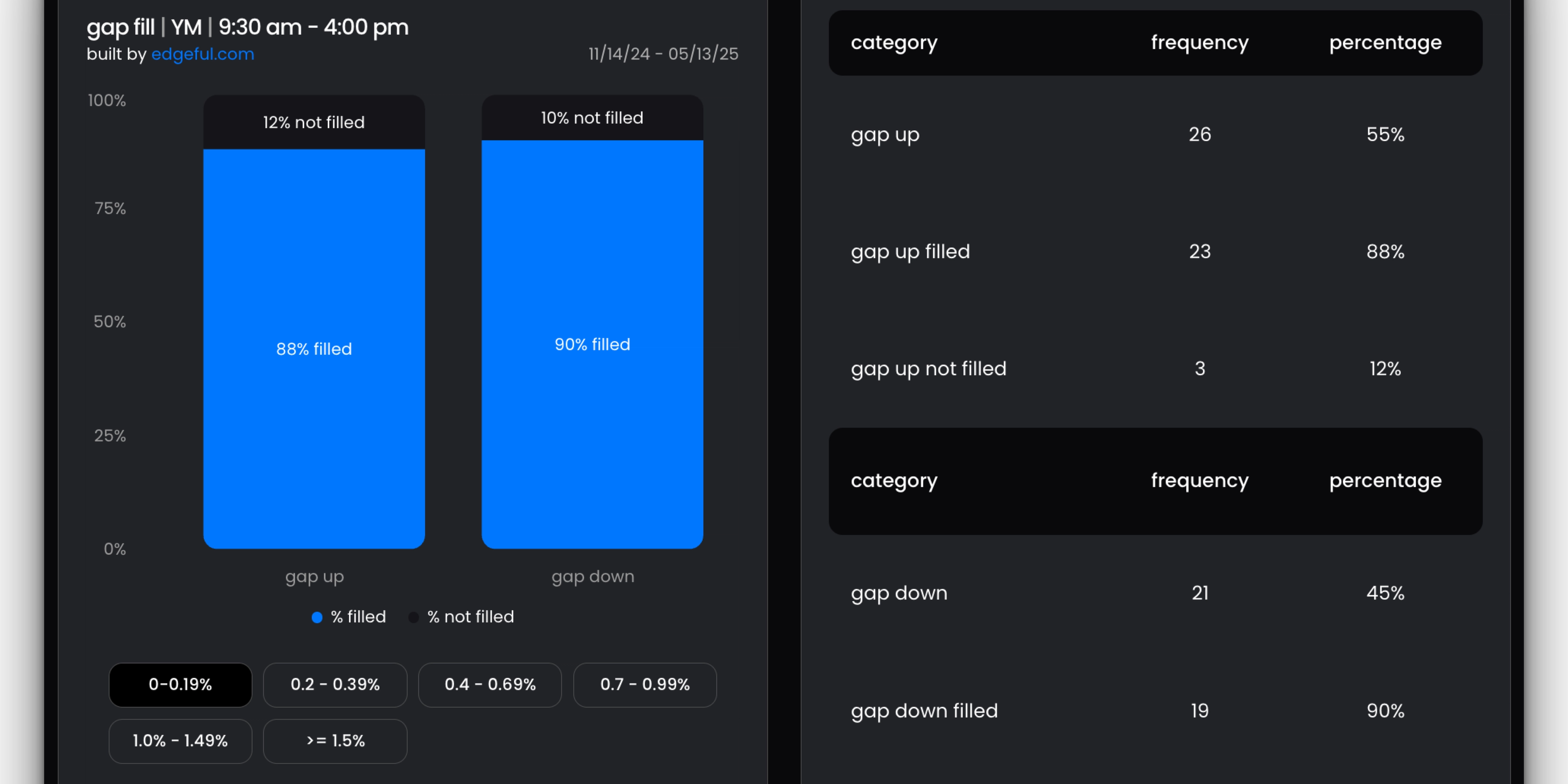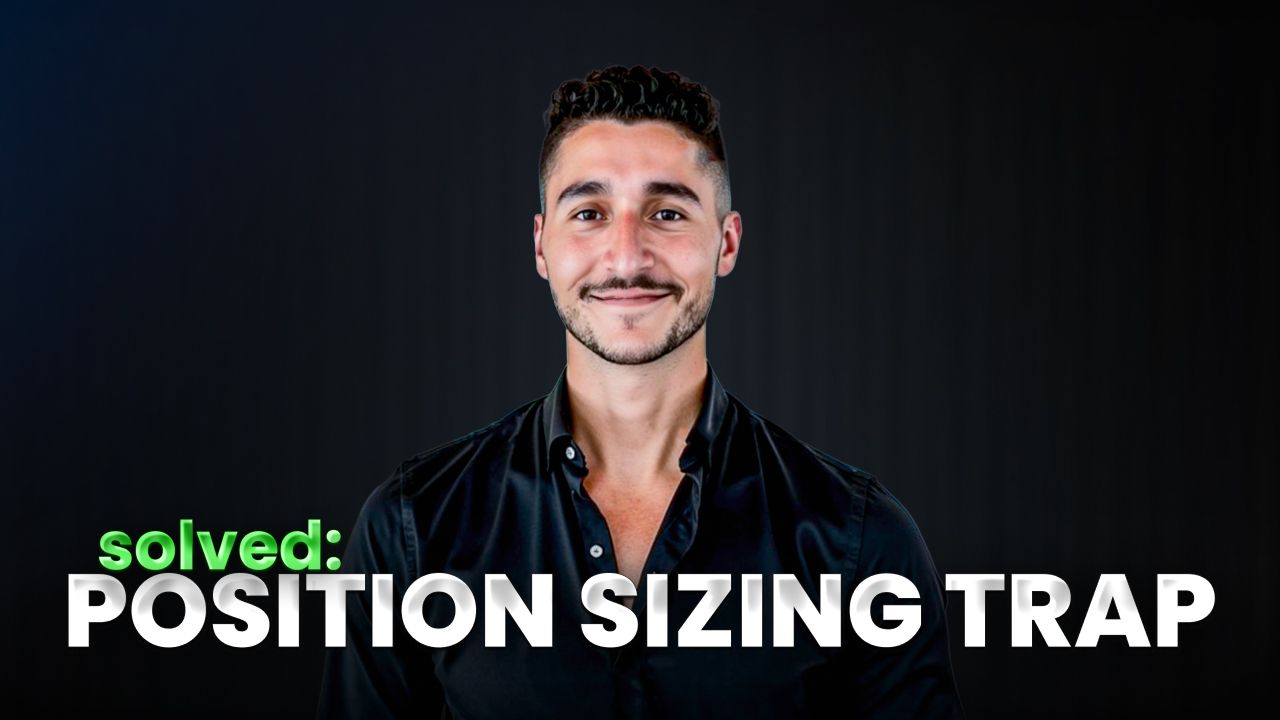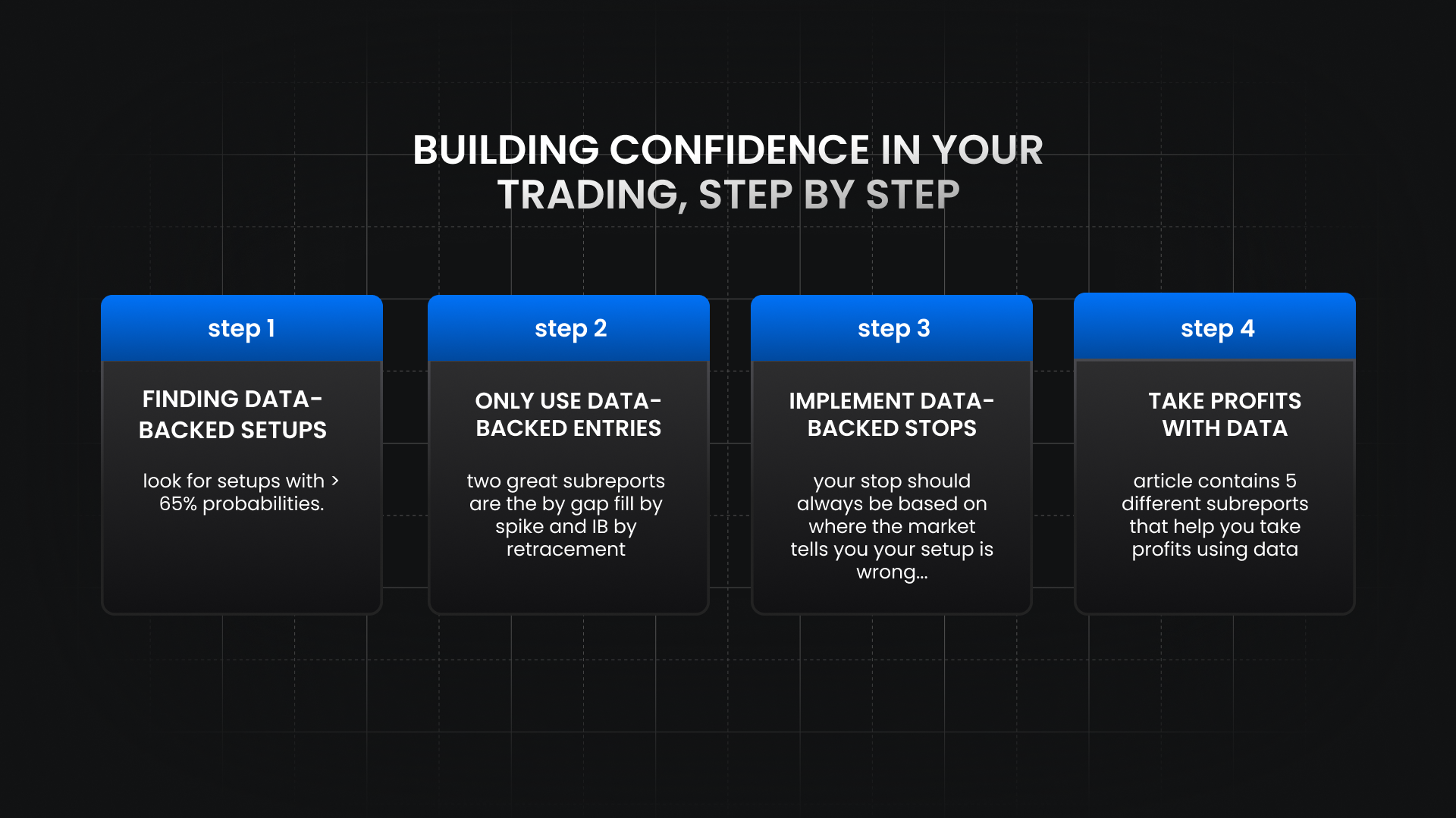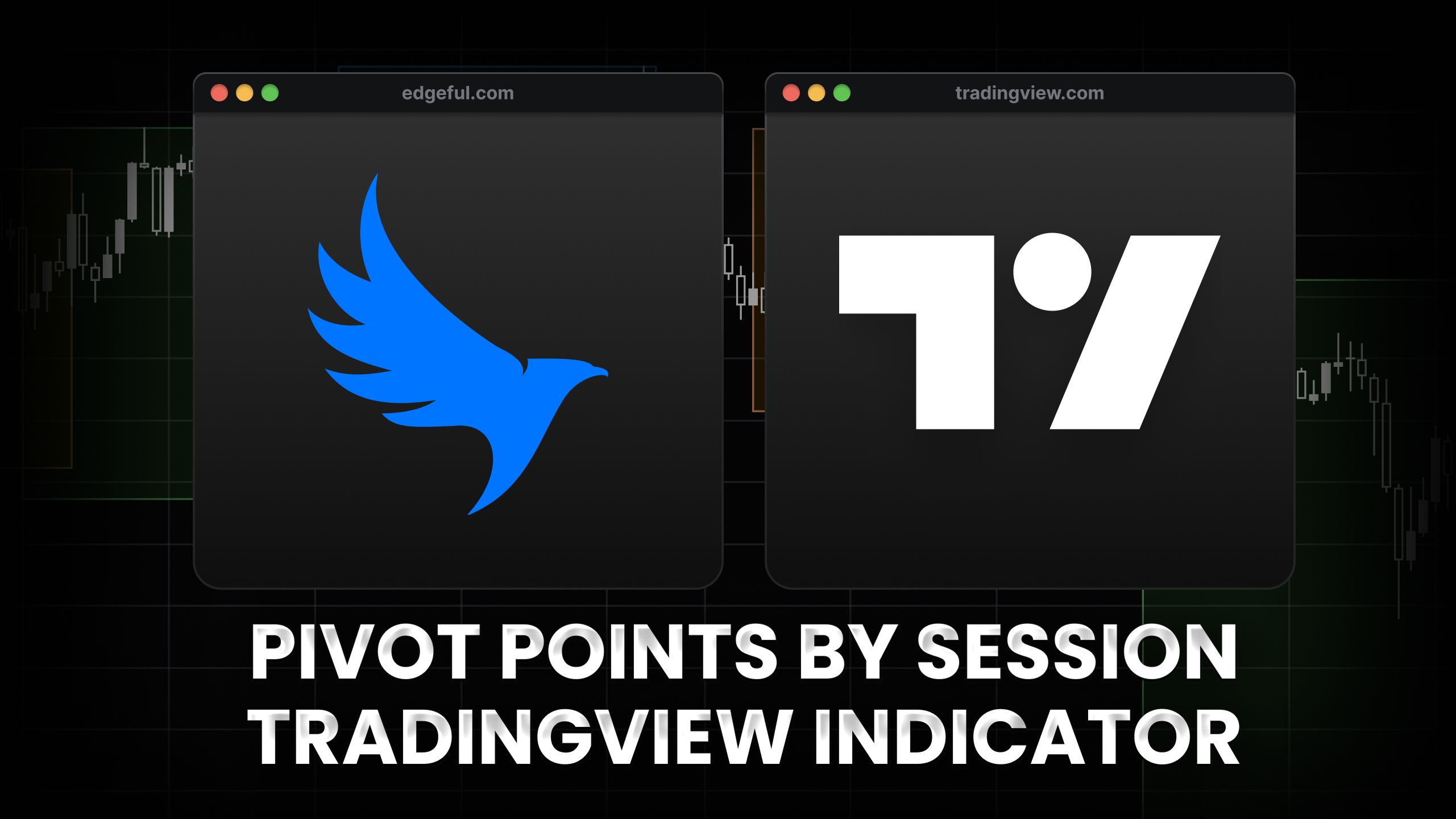the mindset shift that will transform your futures trading strategy

last week, I announced our brand new edgeful algos that are going to tackle the biggest problem traders face every day — making decisions based on emotions instead of data. currently these algos give you actionable strategies on 3 of our most popular reports — the ORB, IB, and Gap Fill — with real performance results and customization options to make the strategies your own. if you missed that announcement and how you can access them, you can read it right here.
this week, I'm going to focus on a powerful mindset shift that separates consistently profitable traders from those who keep blowing up their accounts — redefining what makes a "green day" versus a "red day" in your futures trading strategy. while not the 'flashiest' topic ever, it's one piece of trading psychology that most traders overlook.
here's exactly what we're going to cover:
- why most traders define success incorrectly (it's not about daily P&L)
- redefining what a "green day" actually means for serious traders
- real examples from the gap fill and IB reports showing high-probability setups that still fail - and why this isn't actually a "red day"
- how this mindset shift can instantly transform your trading psychology and your results
your biggest mindset shift: redefining green days vs. red days in your futures trading strategy
here's where most traders get it completely wrong — they define their trading success purely based on P&L:
most traders think:
- green day = made money
- red day = lost money
but this type of thinking is what actually turns profitable traders into losing ones — you can have a futures trading strategy that backtests profitably, but the second you start trading based on P&L, you're screwed.
what profitable traders know:
- green day = followed your plan and rules (regardless of P&L outcome)
- red day = broke your rules (even if you made money)
this mindset shift is what separates serious traders from everyone else. let me give you a concrete example:
- if you take a trade with a 75% win rate, execute it perfectly according to plan, but it happens to be one of the 25% that loses — that's still a GREEN day
- if you randomly enter a position with no edge, no plan, and pure emotion but get lucky and make money — that's a RED day
that second scenario is infinitely more dangerous because it reinforces bad habits. it tells you that it's fine to break your rules once in a while – and before you know it, 'once in a while' turns into 'all the time' and you blow up an account.
everyone gets lucky sometimes, but luck isn't repeatable — process is.
let's look at real examples from our gap fill and IB reports that illustrate this point perfectly (and were setups I traded myself).
the gap fill report: a core futures trading strategy that still loses sometimes
when I say a "layup trade," I'm talking about setups with extremely high probabilities based on historical data.
a layup trade using the gap fill report is where you short a gap up looking for price to touch the previous session's close, or vice versa — where you long a gap down still targeting the previous session's close.
here are some stats from YM over the last 6 months, showing you the probabilities of gaps filling depending on sizes.
YM gap fill by size over the last 6 months

here is how often YM fills gaps that are 0.0-0.19% in size over the last 6 months:
- gaps UP fill 88% of the time
- gaps DOWN fill 90% of the time
absolutely layup trades — literally saying 9/10 times these gaps will fill.
compare these stats with what we see on gaps sized between 0.2-0.39%:

gap fills on YM (gap size 0.2-0.39%):
- gaps UP fill 82% of the time
- gaps DOWN fill 67% of the time
still pretty strong probabilities — especially for the gaps up.
so if you're developing a gap fill futures trading strategy, you should be checking these stats on the tickers you trade to make sure you're only trading the layups — the trades that are filling 7, 8, or 9 out of 10 times.
but here's where the mindset shift comes in — what happens when you take a loss on the 1 out of 10 time?
example: Friday January 24th, 2025 on YM

on this day, YM gapped down less than 0.2% — a textbook layup trade with a 90% fill probability. following the data, you would have entered long targeting the 100% gap fill.
but as you can see, it was one of those 1/10 days where the gap didn't fill. you never took profits because the gap went unfilled, and then your stop loss hits and you lose money.
most traders would call this a "red day" because they see a negative number on their P&L for the day. and if this happened again in a relatively short period, most might even start doubting their futures trading strategy.
but that mindset is completely wrong, and here's why:
this was a GREEN day — you followed your plan and traded a setup with as good data as I've ever seen in a report. literally as close to 10/10 as it gets in trading. the fact that it happened to be one of the 10% that didn't work doesn't change that.
another example: February 17th, 2025 on YM

here's another example from February. YM gapped up between 0.2-0.39% — a setup that still fills 82% of the time.
you took the trade according to plan, but it was one of the 18% that didn't fill — another loss. it sucks, and you hate seeing the negative number or a lower account balance.
but again, this was a GREEN day because you followed your process and traded a high-probability setup. losing trades are part of any futures trading strategy — even one with an 82% win rate.
the initial balance (IB) report: another high-probability futures trading strategy
and just so you know — gap fills aren't the only high probability setup that you can run the numbers on. we've also got the IB!
the Initial Balance (IB) is the range established in the first hour of trading (9:30-10:30AM ET). the IB report tells us how often price breaks one side of the IB range (single break) versus both sides (double break) or neither (no break).
when you take this trade — you're looking for continuation in the direction of the first break. here are some stats on YM for the IB, again over the last 6 months:

- single break: 74% of the time
- double break: 24% of the time
- no break: 2% of the time
based on these stats alone you should be looking for a single breakout or breakdown — where price moves above the IB high or low after the first hour's done trading. since double breaks only occur 24% of the time on YM over the last 6 months, it's very unlikely price moves against you and hits the opposite high/low.
but we can take the 75% probabilities of a single break to the next level when we use the by weekday subreport.
here are the stats by day of week:
- Monday: 76.92% single breaks
- Tuesday: 80.77% single breaks
- Wednesday: 52% single breaks
- Thursday: 80% single breaks
- Friday: 80% single breaks
these are also extremely high probability setups. it's not often you can have a futures trading strategy that works 4 out of 5 times — and this is exactly what the IB gives you (other than Wednesdays).
but again, what happens when you take an A+ setup and it turns out to be a loser?
do you get down on yourself, or are you happy knowing you followed your plan?
example: May 12th, 2025 on YM

on this Monday, YM broke one side of the IB, but then reversed and broke the other side as well — creating a double break, which only happens about 23% of the time on Mondays.
if you were trading the IB single break strategy, you would have lost money when the unexpected reversal happened — and I was one of these people.
does it suck? yes.
did I start second-guessing the strategy or view this as a red day? absolutely not.
it was a GREEN day if you followed your plan. I followed the plan — and there are hundreds of examples of trades that look just like this that turn out to be 'winners'.
instead of starting to second guess the strategy completely, sometimes you have to accept that you're on the wrong side of the probabilities, and that's just part of trading.
you don't need to doubt anything, you don't need to go tilt and try to make back the money you lost — just sit there and patiently wait for the next session/trade to show itself.
example: Thursday April 17th, 2025 on YM

on this Thursday, you can see another example where YM broke both sides of the IB range within the same session — a double break — something that only happens 20% of the time on Thursdays.
if you were targeting continuation after the first break, you would have been stopped out when price reversed. another loss in the P&L, but still a GREEN day from a process standpoint.
people love to make trading out to be this complex thing that you have to be so smart to understand — it isn't that. often times the difference between someone who makes a ton of money and someone who doesn't is their ability to talk positively, view trading as a process, not an outcome, and continue to show up and trust the data.
how to apply this mindset shift to your futures trading strategy
again — one of the main issues I see after talking to thousands of traders is how they view trading psychology.
it doesn't matter if you have a profitable futures trading strategy — when you don't have the right mindset to execute it consistently, or have the confidence to view a process trade as a win no matter the outcome, there's no hope for you long term.
so if that's you, here's exactly how to implement this mindset shift in your own trading:
define your plan before the market opens
- identify high-probability setups using edgeful reports (65%+ stats)
- establish clear entry, stop, and target levels based on data
- write down your rules for the day and commit to following them
judge each day based on process, not outcome
- at the end of each session, ask "did I follow my plan?"
- celebrate the days you stuck to your rules, even if you lost money
- be critical of the days you broke your rules, even if you made money
be honest about random trades
- catching a random move and making money feels great in the moment
- but these "lucky" trades reinforce bad habits
- ask yourself: "could I repeat this process consistently?"
build confidence through repetition
- the more you trade based on data, the easier it becomes to trust the process
- understand that even 80% probabilities mean 1 in 5 trades will lose
- your edge comes from consistency across many trades, not any single result
focus on the long game
- profitable trading isn't about any single day's P&L
- it's about executing a proven edge thousands of times
- maintaining discipline through the inevitable drawdowns
wrapping up: the key to a successful futures trading strategy
let's do a quick recap of what we covered today:
- redefining green days (followed your plan) vs. red days (broke your rules)
- real examples from the gap fill and IB reports showing how high-probability setups still lose sometimes
- how to implement this mindset shift in your daily trading
I always try to be as transparent as possible with you, and here's the truth: I still battle with emotional trading every single day. the difference is that I've built a system of reports and data that help me overcome these emotions.
I know my futures trading strategy works, and losses are just part of the game. I also know that over time, if I execute unemotionally and trust the data, I'll come out on top over a large set of trades.
just wait and see how much money you start making once you shift to this mindset…


